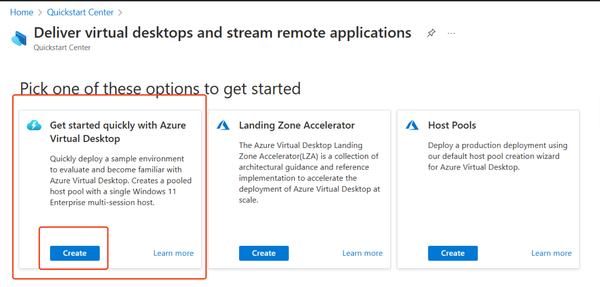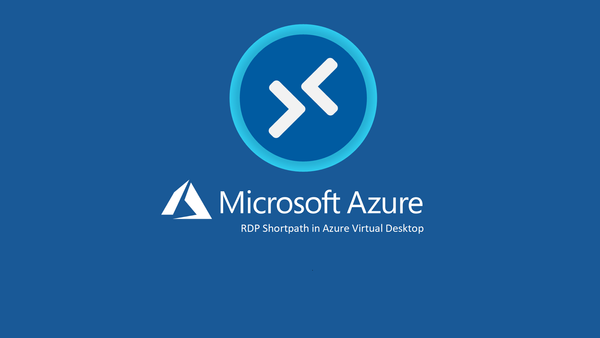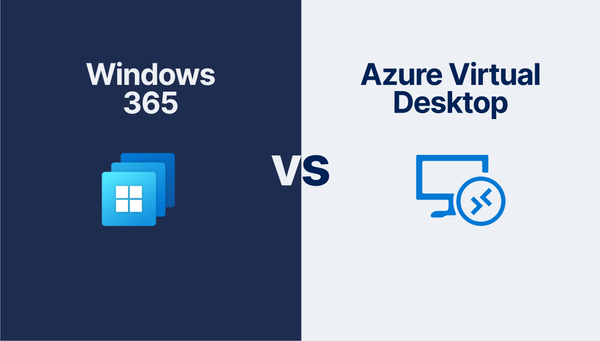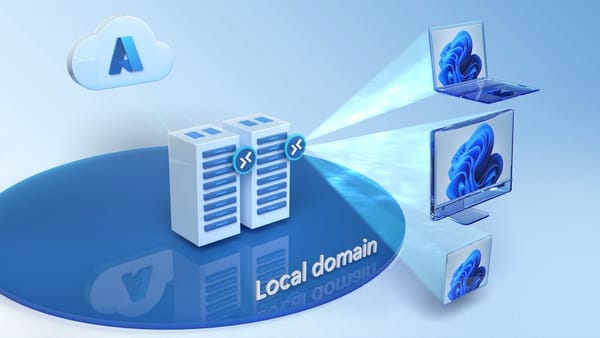Navigating the Shift: Remote Desktop App vs. Windows App
Understand the simplified deprecation timelines and why transitioning to the Windows App is essential today!
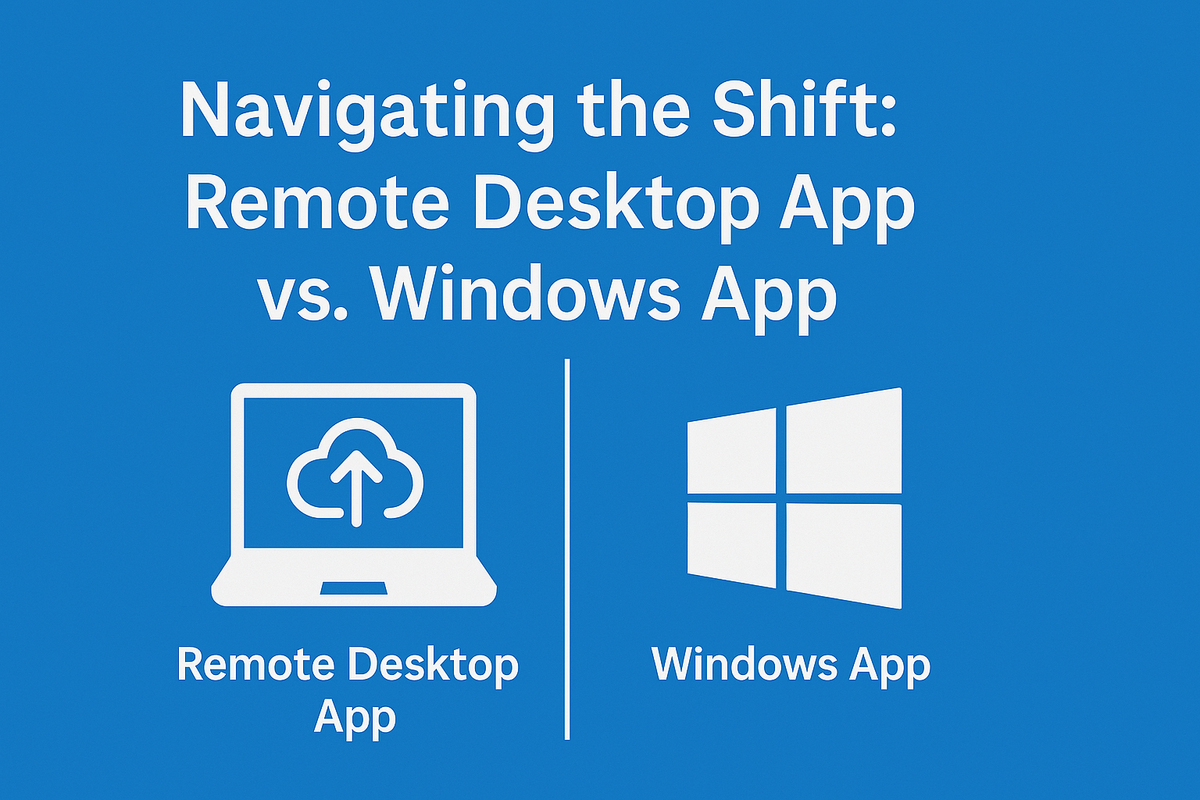
Table of Contents
- Introduction
- What is the Remote Desktop App?
- Meet the Windows App: Microsoft’s Next-Gen Remote Desktop Client
- Remote Desktop App Retirement: What You Need to Know
- Deploying the Windows App with Intune
- Keeping the Windows App Up-to-Date
- Migrating from Remote Desktop App to Windows App: Step-by-Step
- Wrapping Up: Get Ahead of the Change
- Need Help - Get in Touch
Introduction
The way we connect to cloud PCs is changing. Microsoft is gradually phasing out the Remote Desktop App in favour of the Windows App, a modern, cross-platform client for Windows 365 and Azure Virtual Desktop.
In this post, we'll break down what's changing, why it matters and how it'll affect both IT admins and end-users. You'll get a side-by-side comparison, timelines for Support and insights to help you prepare for a smooth transition.
And if you're wondering how to deploy the Windows App - I've got you covered.
Let's dive right in! 🏊♂️
What is the Remote Desktop App?
Before we talk about what's changing, let's cover what's currently in use.
The Remote Desktop App (often installed from the Microsoft Store or downloaded as a desktop client) is the primary tool many users rely on to connect to AVD and Windows 365 Cloud PCs. It provides a clean UI, support for workspaces, and basic redirection and configuration options; making it a go-to solution.
But here's the key thing: the Remote Desktop App is being deprecated. Microsoft has already begun transitioning users to the Windows App, a new unified client designed to work across platforms and offer deeper integration with cloud-based desktops.
We'll go into more detail on the timeline shortly, but some notable takeaways are:
- The Remote Desktop App is in maintenance mode.
- Full deprecation begins in 2025, with end-of-support likely by 2026-2027, depending on the platform.
Meet the Windows App: Microsoft’s Next-Gen Remote Desktop Client
The Windows App is Microsoft's new remote desktop client, designed to replace the legacy Remote Desktop App over time. It's a modern, cross-platform application that works across Windows, macOS, iOS, Web and (soon) Android - given users a consistent experience, regardless of their device.
Built with Windows 365 and AVD in mind, the Windows App is part of Microsoft's push toward a cloud-first, device-agnostic future.
What Makes It Stand Out?
- Unified Experience: One app for all supported Microsoft-hosted desktop services.
- Cross-platform Support: Native clients for multiple operating systems, with web access also available.
- Modern Design & UX: Streamlined and more intuitive compared to the older Remote Desktop App.
- Faster Updates: The Windows App is built to be updated frequently, with rapid improvements based on user feedback.
Remote Desktop App Retirement: What You Need to Know
Microsoft is phasing out the Remote Desktop App, both the Microsoft Store version and the MSI-distributed version – in favour of the new, modern Windows App.
But, if you've read the Microsoft blog posts, like I have, then you'll probably agree some of the messaging is confusing.
Let's break it down clearly below.
🚨 Key Dates Explained
| Milestone | Date | What It Means |
|---|---|---|
| Connection support ends for Remote Desktop App | May 27, 2025 | You can no longer connect to AVD, Windows 365, or Dev Box using the Remote Desktop App (Store or MSI). Use the Windows App instead. |
| End of support for Remote Desktop App (MSI) | March 2026 | Microsoft will stop supporting the MSI version entirely — even for legacy use cases. It’s effectively end-of-life at this point. |
| Legacy mstsc.exe (Remote Desktop Connection) | No change | Not impacted. This tool remains supported for traditional RDP scenarios (e.g. on-prem, unmanaged VMs). |
Bottom Line: If you're connecting to AVD or Windows 365, you need to move to the Windows App before March 2026. If you're using the Store version of the Remote Desktop App, you need to move to the Windows App by May 2025!
Deploying the Windows App with Intune
With support for the Remote Desktop App winding down, it's crucial to roll out the Windows App at scale. If you're managing devices via Microsoft Intune, this process can be straightforward and automated.
In this section, we'll walk through how to deploy the Windows App using Intune.
- Navigate to the Intune Admin Center -> Apps -> Windows -> Add.
- Choose Microsoft Store App (New).
- Search for Windows App by Microsoft.
- Click Select, then configure the required app information and assign it to the target groups.
- Finish by clicking Create.
This method using Winget under the hood, so the install is faster and less error-prone than legacy Store for Business approaches.
Best Practices
- Deploy to pilot groups first to test app behaviour across your customer base.
- Use Filters in Intune to ensure that you're only deploying to the required devices.
- Set up Dynamic Groups for automate application delivery to the required devices.
Keeping the Windows App Up to Date
One of the big wins with the Windows App is that it's built with modern app management in mind. Unlike the legacy Remote Desktop App (MSI), which requires manual patching or re-packaging, the Windows App stays up to date automatically.
Store-Based Updates: Set and Forget
When deployed via the Microsoft Store (new) and Intune, the Windows App receives automatic updates directly from Microsoft, ensuring:
- Security patches applied as soon as they are released.
- Bug fixes and feature updates are seamless and require no user or IT intervention.
- Zero maintenance overhead for support teams.
Why This Matters
For your customers or for organisations running AVD or Windows 365, keeping client apps is non-negotiable. Outdated RDP clients can introduce:
- Vulnerabilities and exploit vectors.
- Compatibility issues with evolving cloud services.
- Support incidents and degraded UX.
By shifting to the Windows App, you remove an entire maintenance stream from your IT operations.
Migrating from Remote Desktop App to Windows App: Step-By-Step
With Microsoft setting May 27, 2025, as the cut-off for Remote Desktop App (store version) connectivity to AVD and Windows 365, it's time to get ahead of the change. Fortunately, moving to the Windows App is straightforward if you follow a structured approach.
Here is how to get it done:
Step 1 - Audit Existing Deployments
Start by identifying where the legacy Remote Desktop App is currently in use:
- Use Intune Reports, Entra ID Sign-Ins, or Endpoint Analytics to identify the devices still using the Store or MSI versions.
- Pay attention and review AVD Host Pools and Windows 365 to understand the affected users.
Step 2 - Communicate the Change
Users should be informed ahead of the switch to avoid confusion. It helps to provide:
- A quick explanation of why the change is happening.
- Instructions or internal documentation on the new Windows App experience.
- A timeline with expected cutover and process.
Step 3 - Deploy the Windows App via Intune
Refer to our earlier section for steps for a seamless rollout.
- Deploy to pilot users first.
- Monitor install success, feedback and functional access.
- Gradually expand to all target groups.
Step 4 - Retire the Remote Desktop App
Once confidence is high, begin phasing out the legacy application.
- For Store-installed versions, you can remove them using Intune App unassignment, or by deploying a PowerShell script.
- For MSI versions, deploy an Intune Win32 uninstall policy or, similarly above, a scripted removal.
Optional: Clean up any group policies, start menu pins, or documentation referring to the old app.
Step 5 - Validate User Experience and Connectivity
Ensure users can:
- Access their AVD or Windows 365 environments without issue.
- Launch the new Windows App smoothly.
- Use required features e.g. multi-monitor support.
🔚 Goal: Complete your migration well before May 2025 (for store versions), giving users time to adapt and your team time to support the transition confidently.
Wrapping Up: Get Ahead of the Change
The clock is ticking on the Remote Desktop App. Microsoft has made it clear: the future lies with the Windows App - a unified, modern Remote Desktop experience that's faster, more secure and easier to manage.
By taking proactive steps now - auditing usage, planning the rollout and communicating with users; you can avoid last-minute disruption and deliver a smoother, more modern experience for your teams.
The transition isn't just about swapping apps. It'a an opportunity to improve how your org or customer approaches remote access and security patching.
Need Help - Get in touch!
Whether you're looking to design a phased migration, tighten security or automate deployment at scale - I can help.
Reach out here if you'd like a hand designing your Windows App rollout or just want to talk through strategy.
Let's make this change work for your org, not to it.



